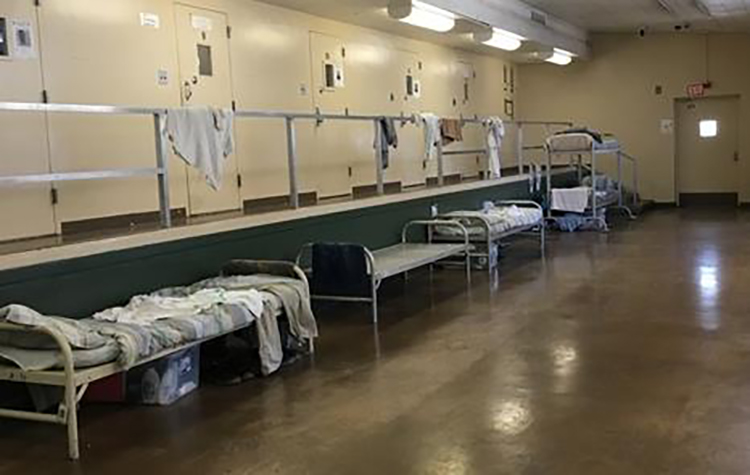As COVID-19 threatens California’s state-run youth detention facilities, the state needs to begin releasing young people from custody, say advocates who have tracked a rise in population in those facilities over the past year.
The four run by California’s Division of Juvenile Justice (DJJ) saw a 17% population jump — from 640 to 747 youth in custody — between December 2018 and December 2019, according to a report released Tuesday by San Francisco-based Center on Juvenile and Criminal Justice (CJCJ).
“COVID-19 has shown the pitfalls of the juvenile justice system,” said Renee Menart, a co-author of the report, who is a communications and policy analyst at CJCJ. “State and system leaders must reduce our reliance on these crowded and dangerous institutions and release young people before it is too late.”
As of Wednesday, DJJ had two confirmed coronavirus cases of staff members at the Northern California Youth Correctional Center in Stockton, the site of the N.A. Chaderjian and O.H. Close facilities, where over half the youth in the state system are held. So far no youth in state custody have tested positive for the virus.
O.H. Close is a dormitory-style facility with 171 young detainees, where dozens sleep in shared rooms that the report describes as “ripe for transmission.” According to a 1994 report from the federal Office of Juvenile Justice and Delinquency Prevention cited by CJCJ, no facility should house more than 150 youth.
The report shows that half of youth incarcerated at state-run facilities are held at least 100 miles from their home. For loved ones, the current pandemic has exacerbated the challenge of visitation, making in-person trips temporarily impossible. So far, the state has introduced Skype visitation only to the smallest state-run detention center, the Pine Grove Youth Conservation Camp in Pine Grove.
Besides the roughly 750 youth held in state-run facilities, others are in centers run by county probation departments. On March 24, Gov. Gavin Newsom ordered a 30-day halt to intake of youth at the state facilities, extending their stay in county facilities.
The current population in state facilities represents a small fraction of the total held during the 1990s, when over 10,000 youth were held in juvenile detention centers run by what was then called the California Youth Authority.
Much of the recent rise in population represents youth who would have otherwise been in an adult prison, said David Muhammad, executive director of the National Institute for Criminal Justice Reform. California juveniles are less likely to be tried as adults and are instead being sent to DJJ facilities, he said.
A spokesman with the Department of Corrections and Rehabilitations (DCR) said that if any youth in a state facility were to test positive for coronavirus, DJJ would be ready to “immediately respond” with isolation and quarantine procedures recommended by the Centers for Disease Control and Prevention.
“DJJ takes the health and safety of all those who live and work in our facilities very seriously,” said Mike Sicilia in a statement. “DJJ is not currently overcrowded. DJJ has taken aggressive action to keep our staff and youth safe, including increased sanitation efforts and both verbal and temperature screening of everyone entering the facilities.”
“No one denies that the level of violence and the conditions in the facilities right now are deplorable,” Muhammad said.
Just over 30 juveniles in custody for every 100 will experience a violent incident in the average month, according to DCR’s Compstat data in the CJCJ report. That’s a slight drop from recent years, when about 33 of every 100 youth in custody were involved monthly in a fight, riot or battery.
“Adults, youth, young adults, whoever — as safely and responsibly as possible, we should be reducing populations specifically because of COVID,” Muhammad said. “If there are young people who are already due to be released in the next few months, they should just expedite those releases.”
